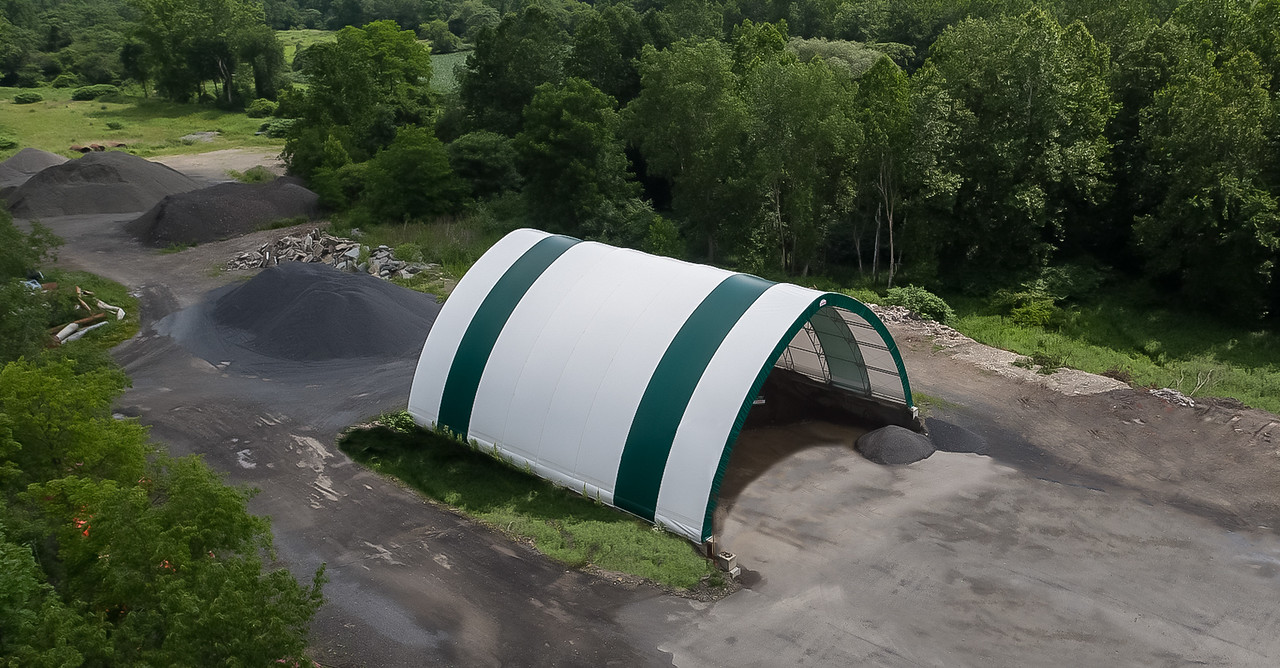What the Best Fabric Building Professionals Do
by Admin | Sep 12, 2018

What’s the art and science behind fabric structures to make sure they last for years and years? You’ve seen them at airports, industrial sites, or warehousing facilities. They make for great office buildings and stunning shopping mall terraces too. But what’s the secret that guarantees the strongest, most reliable fabric building?
Here are some industry best practices that the best fabric building experts incorporate in the delivery of superior-quality fabric buildings:
1. Validate the Strength of the Fabric Structure
The best fabric building professionals employ 3D nonlinear finite element site-analysis (FEA) to predict the performance of a building subject to specific snow loading and weight on the fabric cover, amongst other environmental factors. The application of 3D FEA simulates a structure’s behavior on exposure to strong winds, fatigue, thermal dynamics, rainfall, seismic activity, or snow.
The analysis must be site-specific to address environmental factors as well as end-user requirements. The best engineers utilize accurate, predictive structural analytics, which gives them the confidence to build safe and reliable fabric structures, and entails the following:
- Nonlinear Material Modeling: This helps with the analysis of materials where the relationship between stress and strain is nonlinear. Here, stress is not uniform, but it depends on the extent of material deformation. Taking into account the nonlinear properties of a material, for example, steel or a polymer, allows engineers to model stress distribution accurately. It also helps ascertain particular load-bearing capacity attributes of a model, for example, material failure.
- Nonlinear Geometry Modeling: Applies in the simulation of elements that are highly sensitive to variations in shape. In this case, displacement and strain have a nonlinear relationship.
- Nonlinear Contact Modeling: It helps to predict the behavior of two components at the point of contact under tension and compression. When modeling a fabric structure, designers need to simulate how the membrane component interacts with the steel framework. Should there be contact between the surfaces? Will the elements respond the same way and avoid movement relative to one another under tension and compression forces?
2. Design the Fabric Structure Using Open Web Trusses
Open web trusses make for robust and stable frameworks for putting up the best fabric building. Engineers prefer them due to the many perks they offer, including the ability to customize a design to particular loadings, rather than just the standard joist specifications.
Open web trusses support various design options, including curved top chords and different depths of truss bearing seats. It’s also possible for engineers to integrate steel trusses into a fabric structure’s lateral force protection mechanisms.
Another great benefit of open web trusses is that they usually last longer than other options, such as bent web trusses, when zinc coating is applied. The optimal engineering welds leave sufficient room for the hot-dip galvanizing solution to penetrate and coat the steel framework, inside and out, providing full corrosion protection. Crucial open web truss design considerations include:
- Loading: Engineers take into account relevant load combinations when designing open web trusses for fabric structures. The overall design should anticipate possible structural stress factors like wind uplift, snow, seismic vibrations, and dead loads.
- Deflection: Engineers identify potential sources of temporary or permanent mechanical stress on the structure, such as construction loads and wet truss chords. This enables them to calculate and make design provisions for vertical deflection.
- Bearings: Designers specify bearing dimensions and field tolerance allowances among other specifications within the design of truss bearing hardware, incorporating calculations for dynamic as well static load-weight. These components prop the structure, usually at a truss joint.
3. Hot-Dip Galvanize the Steel Framework
The best fabric building companies apply hot-dip galvanized (HDG) steel frameworks to build hard-wearing fabric structures. HDG steel has the following advantages:
- Corrosion Resistance: HDG coating protects the steel framework from agents of rusting and corrosion, especially moisture.
- High Load-bearing Capacity: Applying HDG to the inside and outside of the steel frame increases the overall thickness by up to 3.99mm. The structural enhancement boosts the strength of the steel framework to 3600/psi, enabling it to survive aggressive winds, heavy storms, and temperature changes.
A typical hot-dip galvanizing process involves dipping steel in a bath of molten zinc. The procedure has to be thorough enough to deliver 100% corrosion protection. As such, the best assemblers ensure the entire framing material comes into contact with the HDG liquid. Usually, the metallurgical reaction takes place at 815-850 F (435-455 C).
The steel frame comes out of the galvanizing process stronger and more impact-resistant due to its several layers of zinc-iron alloys which result from zinc reacting with the iron in steel. The outermost coat is 100% zinc, and it does not rust or disintegrate readily.
Whether you’re looking to build a sports facility, industrial warehouse, or chemical storage facility, you can count on the versatility, durability, and tensile strength of fabric structures. However, the design, engineering, and construction of fabric buildings must follow critical best practices to guarantee their long-term reliability and safety.


